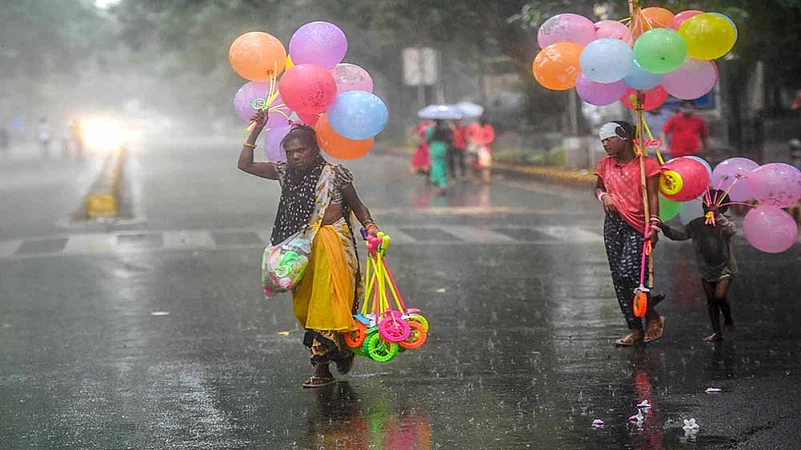A spell of rain late Saturday night brought Delhi's cumulative precipitation this January to 88.2 mm, which is the highest in the month since 1901, according to the India Meteorological Department (IMD). Before this, the capital recorded 79.7 mm of rainfall in 1989 and 73.7 mm in 1953, the IMD data showed.
The Safdarjung Observatory, which provides representative data for the city, has recorded six rainy days and 88.2 mm of rainfall this month so far. It got 19.7 mm of rainfall in the 24 hours ending 8.30 am on Sunday. The Palam Observatory also received a record 110 mm of precipitation this month, according to the data available on the IMD's website.
On Sunday, the national capital recorded a minimum temperature of 10.5 degrees Celsius, three notches above the normal while the maximum temperature was at 14.9 degrees Celsius, six notches below the normal. The Relative Humidity recorded at 5.30 pm was 84 per cent, according to the IMD.
The weatherman has forecast partly cloudy sky with moderate fog for Monday morning and cold day conditions at a few places in the national capital. The maximum and minimum temperatures on Monday is expected to settle at 16 and seven degrees Celsius respectively.
Delhi's air quality was recorded in the "poor'' category on Sunday, the Central Pollution Control Board data showed. The Air Quality Index (AQI) at 7.05 pm was recorded at 201 in Delhi, Faridabad (115) and Gurgaon (172), Faridabad (115), Ghaziabad (165), Greater Noida (140) and Noida (148). An AQI between zero and 50 is considered "good", 51 and 100 "satisfactory", 101 and 200 "moderate", 201 and 300 "poor", 301 and 400 "very poor", and 401 and 500 "severe".
The rainfall had also brought the maximum temperature in the capital down to 14.7 degrees Celsius on Saturday, seven notches below normal and the lowest this season so far. The maximum temperatures have been lower than normal since the second week of January. Minimum temperatures have been close to and above normal.
This is largely due to clouds and rain preventing long exposure to sunshine between January 9 and January 19, said Mahest Palawat, Vice President (Meteorology and Climate Change), Skymet Weather. The rains between January 7 and January 9 increased moisture in the air, which led to foggy conditions amid low temperatures.
"Cold day conditions persisted in large parts of the capital and neighbouring areas till January 16 due to fog and low clouds. The day temperature fell again under the influence of back-to-back western disturbances (WDs) from January 16," he said. Delhi has recorded six WDs in January this year, as against a normal of three to four WDs in the month, Palawat said.
"Delhi saw three WDs between January 1 and January 9. Three more have impacted the capital since January 16, the latest being on January 21," he said. Clouds and rain prevent exposure to sun, which reduces daytime temperature. Clouds trap the heat, which gets through during the day, keeping the night time temperatures above normal. The IMD predicted a dip of three to four degrees Celsius in Delhi's minimum temperature in the coming days.
With PTI Inputs
















